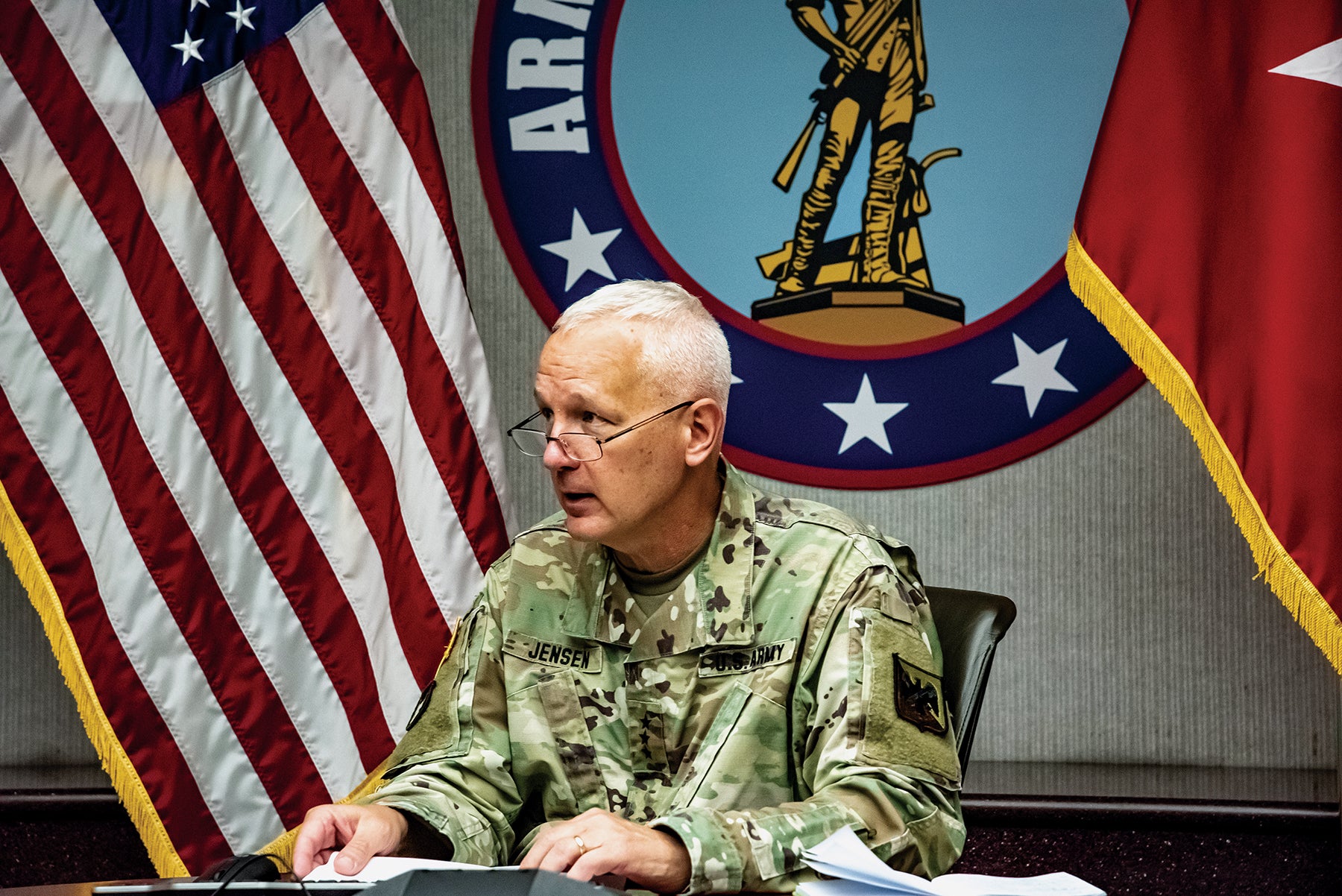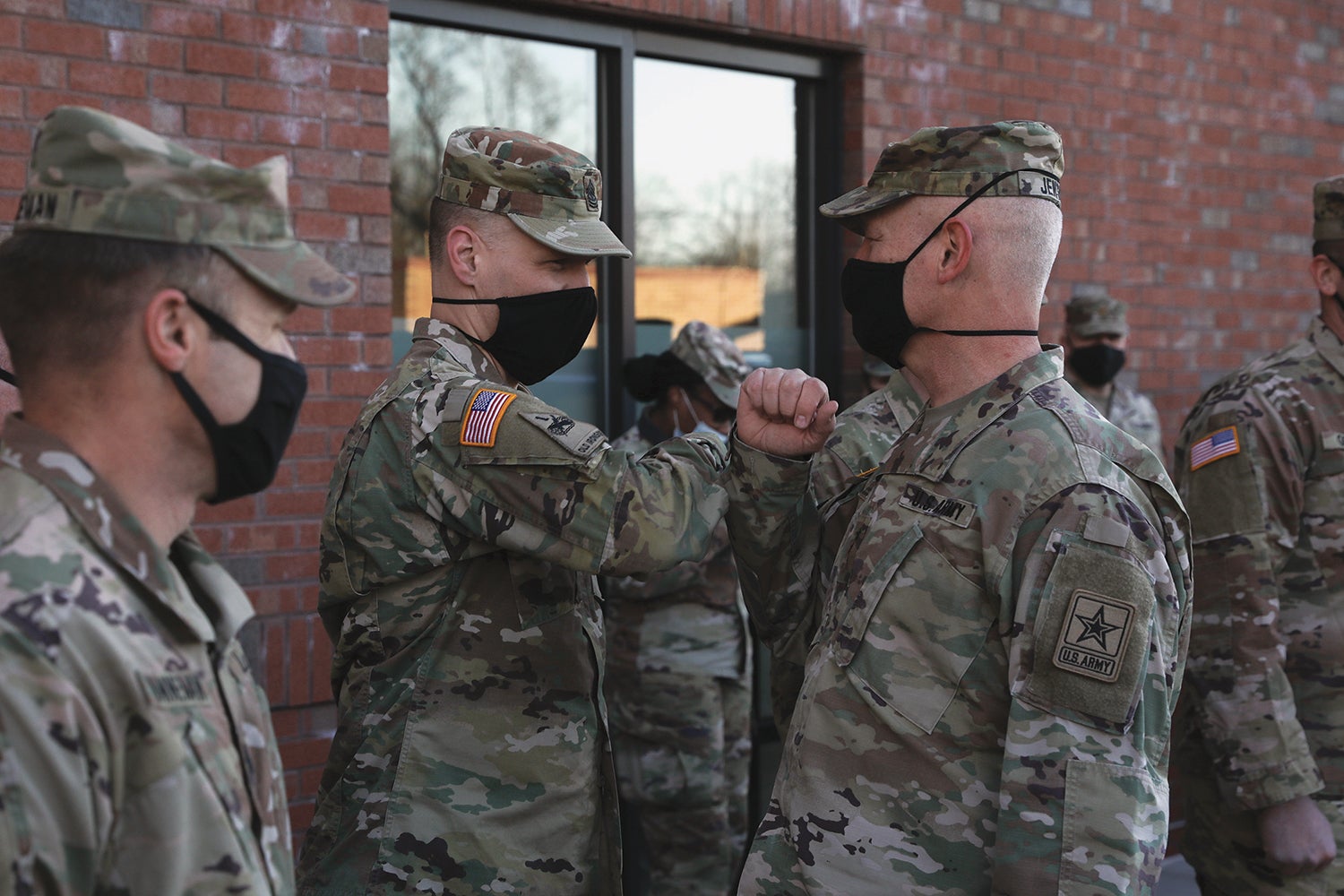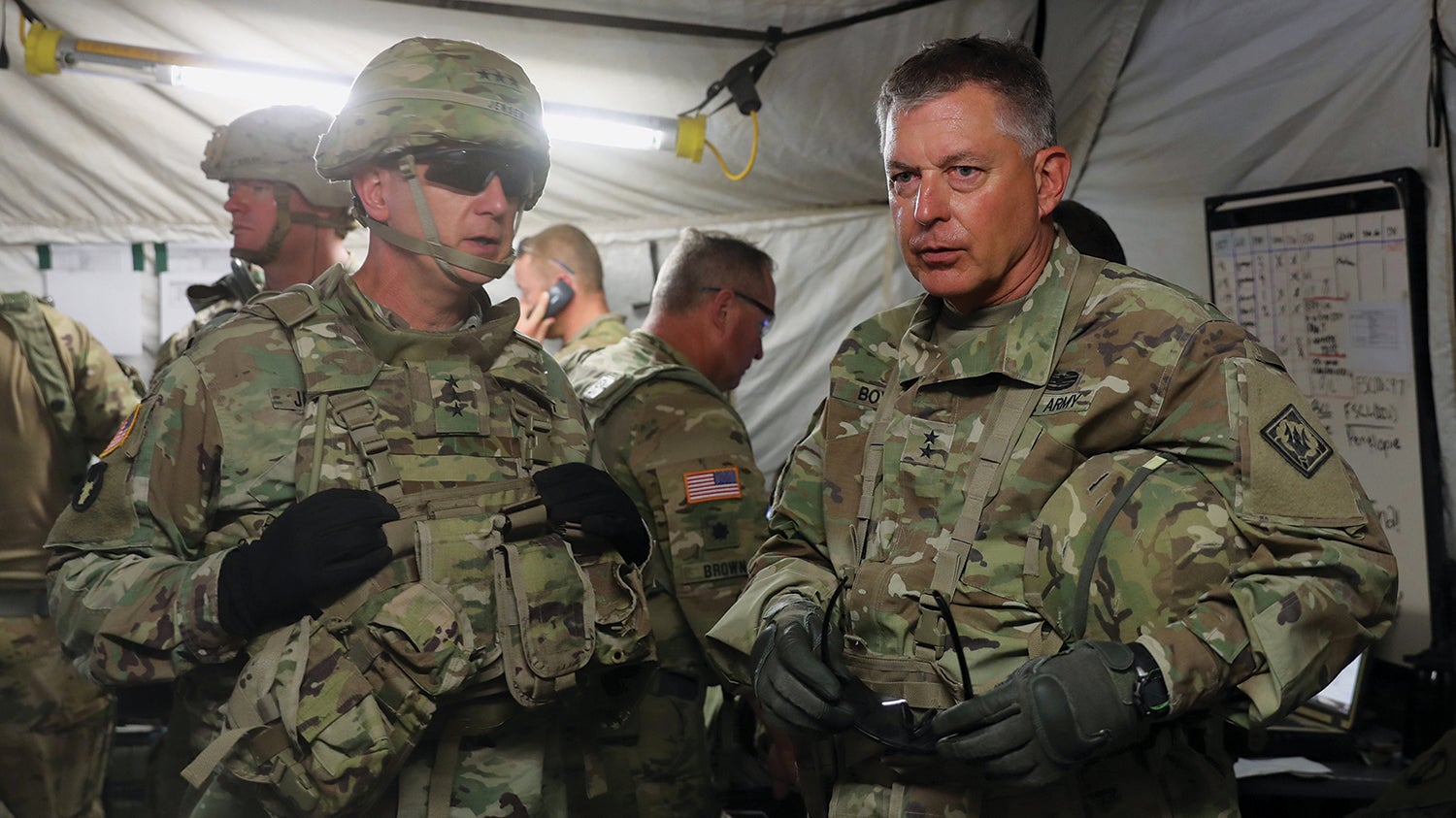The year ahead for the Army National Guard promises to be as demanding as it’s been for the past two years, when soldiers responded to an unprecedented level of activity ranging from wildfires, floods, storms and hurricanes to civil unrest and COVID-19 support missions.
While the Army National Guard’s 336,000 soldiers keep up with myriad domestic missions and overseas deployments, the second-largest Army component is on track to modernize in step with the Regular Army. It is also reorganizing for the future battlefield and opening new leadership opportunities in the ranks, the Army National Guard’s top general said.
Lt. Gen. Jon Jensen, who became the 22nd director of the Army National Guard in August 2020, said with close to two decades of counterinsurgency operations in the rearview mirror, the Guard is preparing for large-scale combat alongside the active-duty Army by reorganizing from a brigade-centric force to a division-centric model that will enable more integrated training and create multidomain-capable formations.
“We want to maintain our role as an operational reserve of the Army … so as the Army modernizes, we need to modernize with them, and part of that modernization is how we are organized,” Jensen said. “If the Army is going back to the division as the centerpiece for decisive action and multidomain operations, the Army National Guard needs to look exactly like that.”

Division Alignment
The reorganization plan, known as the Army National Guard Division Alignment for Training program, was launched by Gen. Daniel Hokanson, Jensen’s predecessor who is now chief of the National Guard Bureau, just before Jensen took over as director of the Army National Guard.
“This alignment will not only help us improve readiness, it will greatly enhance talent management from company to division level,” Hokanson said when he announced the program in July 2020. “Through coordination between adjutants general and division commanders, our soldiers will have opportunities for key leader-development positions previously hampered by geography.”
Hokanson said the intent of the reorganization is to help “build habitual relationships that would increase readiness and ensure interoperability through common organization, training and equipping.”
One year into implementation, Jensen said the plan is “a work in progress” that will take the better part of this decade to complete. It will be driven, in part, by the Army’s Regionally Aligned Readiness and Modernization Model, known as ReARMM, a force generation model unveiled in October 2020 that will prepare soldiers for current and future missions by aligning divisions with geographic regions on predictable deployment and training rotations.
In tandem with the Army’s new framework, the Army National Guard will align its brigade combat teams and combat support brigades with its operational division headquarters in New York, Virginia, Pennsylvania, Minnesota, Kansas, Indiana, Texas and California.
With a target of 2028 for completion, according to Jensen, the reorganization program will increase the Regular Army’s deployable divisions to 18, eight more than it has now.
“We’re on the right path,” Jensen said, adding, that while he’s “exceptionally pleased on where we’re at,” more work needs to be done. “This won’t be normalized for several years.”
The first step was to achieve full operating capability, which meant establishing agreements and relationships between division commanders and the adjutants general they will support in the 54 states and territories and the District of Columbia.
Brigade combat teams have been aligned with their respective division headquarters, and coordination is underway to establish how these relationships will support soldiers and their units, Jensen said.
“The next steps include aligning our functional and multifunctional brigades and divisional battalions to divisions,” Jensen said, explaining that “there is a little delay in this effort since some of these formations are normally corps-level units, or they are in the process of redesign.”
Implementation of the alignment plan will strengthen the Army National Guard’s ability to integrate with Regular Army divisions and joint forces, and provide more training opportunities, including at the Army combat training centers, he said.

Identifying Talent
A benefit of the brigade alignment plan is a built-in talent management process that will provide National Guard soldiers and officers with more visibility on division-level job openings, enhancing career progression opportunities. Currently, a soldier who wants to move from a brigade job into a division opening must find out about the job informally, then move to another state voluntarily.
With the alignment plan’s formal talent management process, which is supported by the National Guard and state adjutants general, Jensen said, opportunities for advancement into key leader-development positions will be more transparent to soldiers and officers who want to move from their affiliated state into division-level jobs in another state.
“At times, the Army Guard can be a very state-centric force, and while we will remain a state-centric force, what we’re trying to do is identify and provide opportunities for soldiers in one state to have that opportunity in another state, as it relates to expanding their career and managing our soldiers in a talent management program,” he said.
Jensen offered as an example the relationship being built between Mississippi and Virginia. While the Mississippi National Guard’s 155th Armored Brigade Combat Team is not yet formally aligned with the Virginia National Guard’s 29th Infantry Division, the division commander, Maj. Gen. John Rhodes, is a Mississippi National Guard officer.
Meeting Mission
As the Army National Guard pivots to meet the demands of modernization and future warfare, one thing remains steady, Jensen said. “I think the nation still looks at the National Guard as a unique way to serve their community and their country. This year, we are on the path to exceed our end strength mission,” he said.
He noted that the Army National Guard is on track to meet or exceed its recruiting and retention mission for fiscal 2021 even with the demanding operational tempo of the past couple of years.
The Army National Guard ended fiscal 2020 with 336,131 soldiers, slightly above its goal of 336,000. Jensen, whose fiscal 2021 end strength mission is 336,500, said recruiting and retention had been exceeded as of July.

To meet the challenges of a competitive recruiting environment, the Army National Guard released a new recruiting campaign, “The Next Greatest Generation is Now,” in January. Featuring real National Guard soldiers, the campaign is designed to appeal to 18- to 24-year-olds by inviting them to be the next great generation that meets the challenges of a complex world.
Army National Guard soldiers were deployed almost nonstop in 2020 in high-profile, demanding domestic missions that included COVID-19 response, natural disasters and multiple security support missions due to national civil unrest. In 2021, the pace of deployments remained steady.
In addition, tens of thousands of Army National Guard soldiers were mobilized to carry out high-profile missions in Washington, D.C., following the Jan. 6 attack on the U.S. Capitol and in the weeks before and after the Jan. 20 presidential inauguration.
Calling those missions “very big moments for the National Guard,” Jensen also pointed to challenges that added to “a very difficult year,” including several storms and hurricanes, and a record-breaking year for wildfire response. “Those seasons seem to start a little bit earlier every year, so in addition to everything else we’re doing, we’ve got that on the horizon as well,” Jensen said.
Through it all, he said, the National Guard has maintained its readiness with a demanding training schedule, to include rotations over the summer at the National Training Center at Fort Irwin, California, and the Joint Readiness Training Center at Fort Polk, Louisiana.
“I understand that it’s very challenging for our traditional Guardsmen to fulfill all the requirements that are laid before them, so that’s why in the National Guard, we really empower our adjutants general at the state level to work through that balance with their soldiers and with their units to tell us when there are challenges and maybe times where they can’t meet a specific mission,” Jensen said.
Describing his first year on the job as having “flown by pretty fast,” Jensen expressed certainty that “we all played a part of a key moment in our nation’s history” by transitioning from the initial response to the COVID-19 pandemic and into the current phase of supporting vaccination efforts.
“Getting the Army and getting our nation through COVID-19 is very important to all of us, and that mission is not over yet. So, while we’re beginning to focus on other things, getting our nation and our Army through that remains a priority,” Jensen said.

